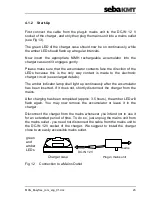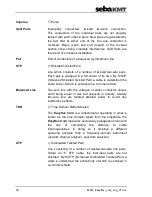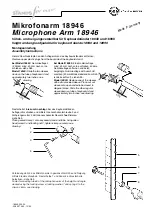
MAN_Easyflex_com_eng_01.doc
55
NEXT
Near End Cross (X) Talk
NEXT (Crosstalk) describes the coupling of signal
components into a neighbouring
Pair running in parallel.
Crosstalk is undesirable as each component coupled into a
neighbouring pair will impair the signal-to-noise ratio in this
line. This is why in standards on data communication
equipment, certain minimum values are required for
crosstalk. Crosstalk attenuation is usually worst at the near
end, i.e. when one pair is used for transmission and another
pair for reception. Crosstalk may also be introduced by
other faults in the cable (e.g. a faulty junction box with
improper shielding of individual
pairs from one another).
The Easyflex Com is able to locate these types of faults.
NVP
(= Nominal Velocity of Propagation)
The value of NVP, also called propagation time factor or
”reduction factor” (Verkuerzungsfaktor in German), is a way
to describe the propagation velocity of a signal along a line.
It specifies the ratio of signal propagation velocity to the
velocity of light. If, for instance, the NVP of a cable is
specified to be 0.65, the propagation velocity along the
cable is:
s
m
194.86
=
s
m
299.79
•
0.65
=
c
•
NVP
=
v
µ
µ
where c = 299.79 m/
µ
s velocity of light. There may be
differences between the information given in data leaflets or
the table in the manual and actual propagation times in real
objects due to the dependence of NVP on the material
used. As a rule, the difference is greater in balanced cables
than in coaxial cables. Moreover you have to reckon with
the individual pairs having slightly different values of NVP.
This has to be attributed to the fact that the shields of
different conductors contain different types of dye in order
to be able to distinguish individual conductors. As each dye
has a different value of
ε
r
, signal propagation velocity is
different from pair to pair.
In the Easyflex Com, signal propagation velocity can be set
as either NVP or
v
/
2
.



































